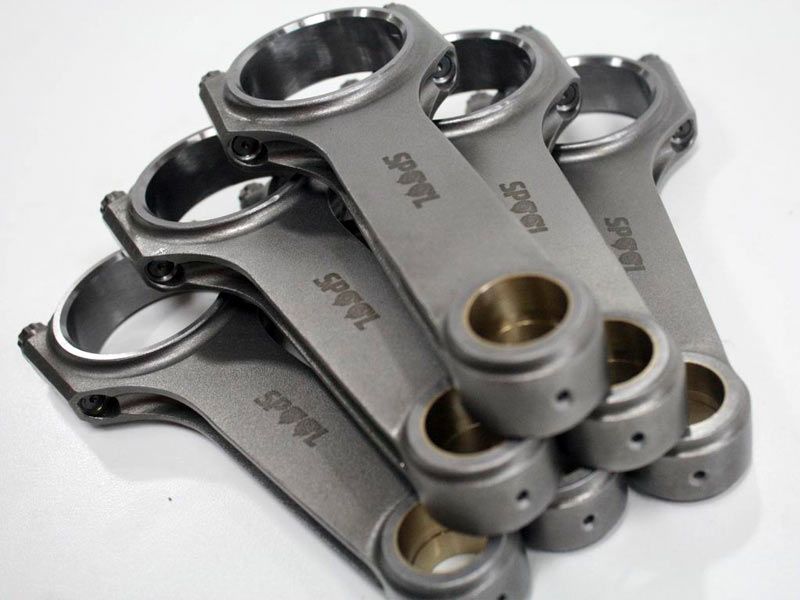Should a Connecting Rod have a Oil Hole Between the Main Journal and Piston Pin?

In an internal combustion engine, connecting rods (conrods) are responsible for transmitting the power from the piston to the crankshaft. They typically have provisions for oiling to ensure proper lubrication of the moving components. While there is no universal design for connecting rods, all will have methods incorporated to provide lubrication to the various bearing surfaces.
Regarding an oil hole from the main journal to the piston pin, this design feature is not typical or necessary in most automotive engine applications. The main journal and the piston pin (wrist pin) are separate components that operate with different lubrication requirements.
The main journal of the connecting rod usually receives lubrication from the engine's oil supply via the crankshaft bearings. On the other hand, the piston pin is often lubricated through a separate system, such as passages within the pistons, oil splash directed from the underside of the piston and sometimes, oil squirters.
There are several reasons why it may not be desirable for a connecting rod to have an oil hole connecting the main journal to the piston pin:
- Lubrication Requirements: The main journal and the piston pin have different lubrication requirements. The main journal is typically lubricated by oil supplied through the crankshaft bearings, while the piston pin may have a separate lubrication system, such as oil squirters or passages within the connecting rod. It is not necessary to connect the two with an oil hole since they operate under different conditions.
- Oil Pressure and Flow: The oil pressure and flow characteristics for the main journal and the piston pin may differ. The main journal often experiences higher oil pressure due to its larger bearing surface area and higher load capacity. On the other hand, the piston pin typically requires lower oil pressure and flow to provide sufficient lubrication. Connecting the two with an oil hole could disrupt the oil flow balance and potentially lead to inadequate lubrication in one or both areas.
- Bearing Surface Design: The main journal and the piston pin have different bearing surface designs. The main journal usually has a larger bearing surface area to support the higher loads and torque transmitted through the crankshaft. In contrast, the piston pin has a smaller bearing surface area since it primarily facilitates the movement of the connecting rod and piston. The design considerations for these bearing surfaces differ, and a shared oil hole may not be suitable for both.
- Manufacturing and Structural Integrity: Introducing an oil hole connecting the main journal to the piston pin adds complexity to the manufacturing process. Drilling a hole through the connecting rod and ensuring proper alignment can be challenging. Moreover, it may weaken the structural integrity of the connecting rod, potentially compromising its strength and durability.
Spool Conrods do not have an oil channel between the main journal and the piston pin. We have not compromised our high-performance connecting rod design by drilling a hole through the shaft of the connecting rod. Oil to the piston pin is provided via channels in the pistons and via splash though a hole in the top side of the pin end of the connecting rod.
